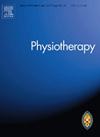Best practice recommendations for physiotherapists providing telerehabilitation to First Nations people: a modified Delphi study
IF 3.1
3区 医学
Q1 REHABILITATION
引用次数: 0
Abstract
Objectives
This study aimed to develop best practice recommendations for physiotherapists providing telerehabilitation to First Nations people.
Design
Modified Delphi study.
Participants
Eighteen experts from four groups were selected: (a) physiotherapists who provide telerehabilitation to First Nations people, (b) Carrier Sekani Family Services leaders (CSFS, First Nations-led health organization/research partners), (c) telehealth experts from British Columbia (BC), Canada, and (d) First Nations individuals (end users) with experience in telerehabilitation.
Methods
Panelists rated recommendations on telehealth best practices in two rounds using an online questionnaire. Recommendations were synthesized from a scoping review and two qualitative studies. Each statement was rated on a four-point Likert scale indicating whether it was essential, useful, not useful, or unnecessary for inclusion in the best practices. Statements endorsed by ≥80% of panel members were considered for inclusion in the final document.
Results
Following the Delphi process, 77 recommendations covering foundational components, information technology utilization, professional expertise, therapeutic relationships, cultural safety, and the telehealth visit were validated for inclusion in the policy document. Participants also validated the methodology.
Conclusion
The recommendations offer a valuable resource for continuing education and professional development, empowering physiotherapists to enhance their skills and competencies in delivering culturally competent telerehabilitation to the First Nations population. The adoption of these best practices ensures that First Nations people are getting the best standard of care, potentially enhancing uptake and experiences with telehealth. It also enables healthcare organizations and policymakers to monitor adherence to established standards and identify areas for improvement.
Contribution of the Paper
- •This paper provides best practice recommendations for physiotherapists delivering telerehabilitation to First Nations people, addressing unique cultural aspects and virtual relationship building.
- •The study offers physiotherapists expert guidance to enhance the quality and cultural appropriateness of telerehabilitation services for First Nations populations.
- •The recommendations serve as a valuable resource for continuing education and professional development, enabling physiotherapists to deliver culturally competent and effective care.
- •These best practices facilitate accountability and quality assurance, helping healthcare organizations and policymakers monitor adherence to standards and identify areas for improvement.
求助全文
约1分钟内获得全文
求助全文
来源期刊

Physiotherapy
医学-康复医学
CiteScore
6.40
自引率
3.00%
发文量
377
审稿时长
82 days
期刊介绍:
Physiotherapy aims to publish original research and facilitate continuing professional development for physiotherapists and other health professions worldwide. Dedicated to the advancement of physiotherapy through publication of research and scholarly work concerned with, but not limited to, its scientific basis and clinical application, education of practitioners, management of services and policy.
We are pleased to receive articles reporting original scientific research, systematic reviews or meta-analyses, theoretical or debate articles, brief reports and technical reports. All papers should demonstrate methodological rigour.
 求助内容:
求助内容: 应助结果提醒方式:
应助结果提醒方式:


